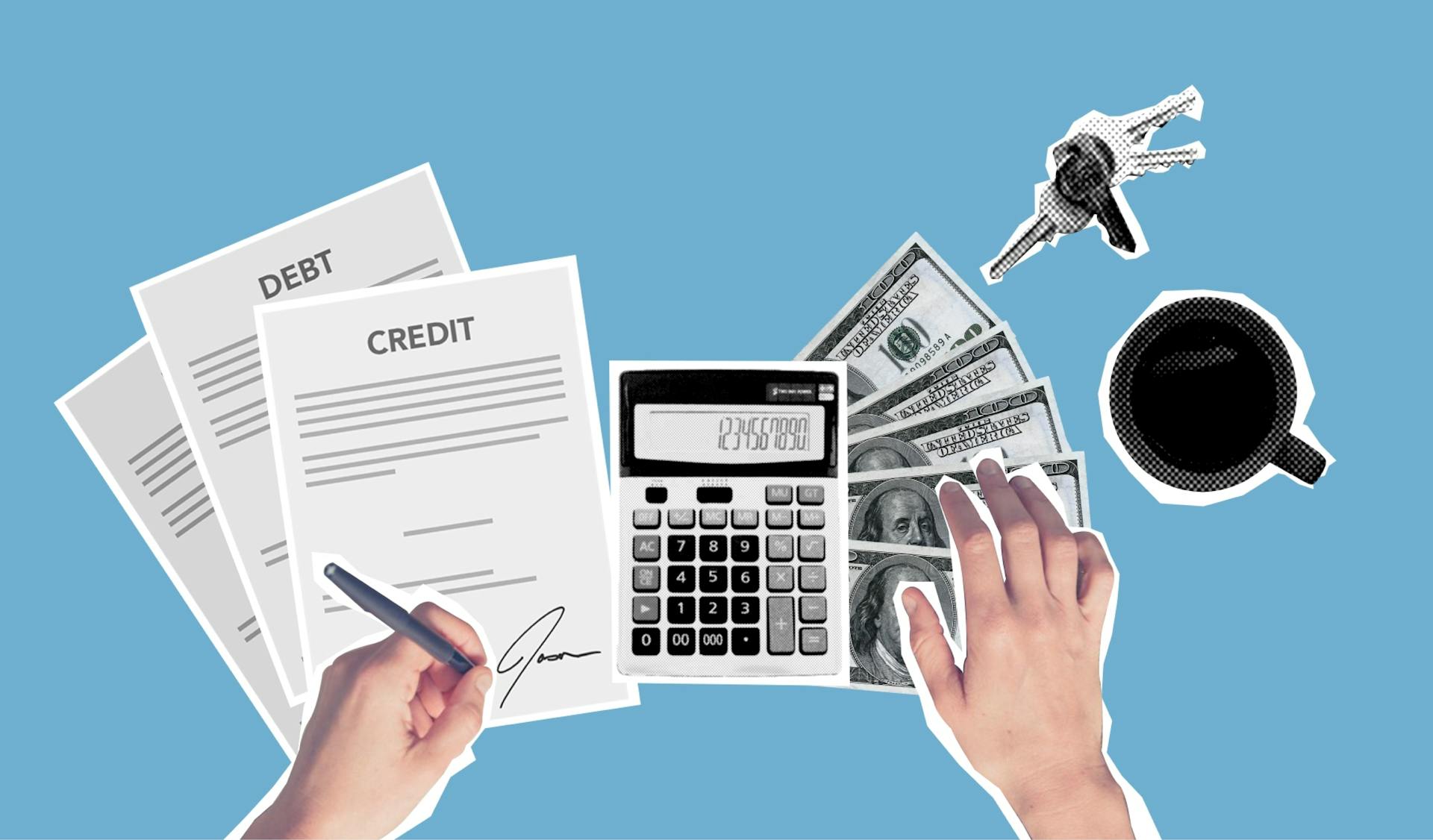
FHA loans offer a range of down payment options, including as little as 3.5% of the purchase price.
For example, if you're buying a $200,000 home, your down payment would be $7,000. This is a significant advantage for first-time homebuyers or those with limited savings.
FHA loans also have more lenient credit score requirements compared to conventional loans, making them a more accessible option for many borrowers.
A credit score of 580 or higher is typically required for the lowest down payment option, but FHA loans can be obtained with credit scores as low as 500 with a 10% down payment.
Additional reading: No down Payment Mortgage Loans Bad Credit
Eligibility and Requirements
To qualify for an FHA loan, you'll need to meet certain requirements. You must have a minimum credit score of 580 to put down 3.5% of the purchase price. If your credit score is between 500 and 579, you'll need to make a down payment of at least 10%.
Worth a look: Dscr Loan No down Payment No Credit Check
Your debt-to-income ratio is also a key factor. Lenders like to see your monthly income to be greater than the amount you spend on your monthly payments. Typically, they like to see a ratio of 31:43 percent.
Here's a breakdown of the FHA loan requirements:
- FHA credit score: As low as 580 with a 3.5 percent down payment or as low as 500 with a 10 percent down payment
- FHA down payment: At least 3.5 percent down if your credit score is at least 580, or at least 10 percent down if your credit score is between 500 and 579
- FHA debt-to-income (DTI) ratio: At most 43 percent (up to 50 percent in some cases)
These requirements are designed to ensure you can afford the loan and make your mortgage payments on time. By meeting these requirements, you'll be well on your way to qualifying for an FHA loan.
See what others are reading: Fha Loan Salary Cap
Who Can Qualify?
If you're wondering who can qualify for an FHA loan, the answer is pretty broad. Many lenders are willing to accept applicants, as long as they meet the minimum FHA requirements.
You don't need to be a first-time homebuyer to qualify, but FHA loans are especially popular among first-timers because of their low down payment flexibility and average credit score requirement. Borrowers can make a down payment as little as 3.5%, and have a minimum credit score of 580.
Explore further: What Amount of Home Loan Will I Qualify for

If you have a credit score between 500 and 579, you'll need to make a down payment of at least 10%. This is still a relatively low barrier to entry, and can be a great option for those who are struggling to save up for a larger down payment.
Interestingly, borrowers who have filed for bankruptcy in the past can still qualify for an FHA loan, as long as they've been two years out of bankruptcy and have shown improved credit. Some exceptions can be made, but borrowers will need to demonstrate that they've made significant improvements and are managing their finances wisely.
Here's a quick rundown of the minimum credit score requirements for FHA loans:
Ultimately, the FHA makes its program accessible to anyone who meets the minimum requirements, so it's worth exploring if you're in the market for a new home.
Income Requirements
FHA loans don't have a specific income requirement, but you'll need to prove you can pay back the loan in full.
Lenders consider your debt-to-income ratio, which compares your debts to monthly income, and they like to see it below 43 percent.
To give you a better idea, let's say you earn $3,000 per month - it's best to keep your monthly mortgage payments below $930, which is 31 percent of your income.
Other financial obligations like credit card debt, student loans, and bills also need to be factored in, and your combined monthly payments should be less than $1,290, which is 43 percent of $3,000.
If this caught your attention, see: Total Amount of Student Loan Debt
Debt-to-Income (DTI) Ratio
Your DTI ratio is a crucial factor in getting approved for an FHA loan. Lenders consider your debt-to-income ratio, which compares your debts to monthly income.
To meet the requirements, your combined monthly debt payments, including your mortgage, shouldn't exceed 43 percent.
You can calculate your DTI ratio by dividing your total monthly debt payments by your gross income. For example, if you earn $3,000 per month, your mortgage payments should be below $930 to meet the 31 percent ratio requirement.
A unique perspective: Online Personal Loans with Monthly Payments
Don't forget to factor in other financial obligations, such as credit card debt, student loans, and other bills. Your lender may also consider mitigating factors like a lot of liquid assets or a sizable down payment to make exceptions for your overall DTI up to 45 percent, 50 percent, or even 57 percent.
Here's a breakdown of the DTI ratio requirements:
Remember, your lender wants to see that you have a stable income and can afford the loan payments.
Property Requirements
To qualify for an FHA loan, your property must meet certain standards. The FHA has basic property requirements that ensure the property is safe and livable.
A solid foundation is a must, so you can rest assured that the property won't collapse anytime soon. The property must also be free of significant defects or incomplete renovations.
Adequate drainage and irrigation are crucial to prevent water damage and ensure the property remains in good condition. You'll want to make sure the property has working heating, plumbing, and electrical systems to keep you and your family safe and comfortable.
All rooms in the property should have adequate lighting and ventilation. This is not just a nice-to-have, but a necessity for a healthy and happy living environment. The property must also be free of hazards inside and outside, so you can enjoy your home without worrying about safety risks.
Here are the FHA's basic property standards in a nutshell:
- Structurally sound with a solid foundation
- No significant defects or incomplete renovations
- Adequate drainage and irrigation
- Working heating, plumbing, and electrical systems
- Adequate lighting and ventilation in all rooms
- Free of hazards inside and outside
Loan Amount and Down Payment
The FHA loan amount and down payment are two crucial factors to consider when exploring this mortgage option. An FHA loan requires a down payment of at least 3.5 percent, but you can put down more to lower your monthly payment.
If your credit score is between 500 and 579, the minimum down payment increases to 10 percent. This is a key consideration for borrowers with lower credit scores.
You can use down payment funds from sources other than your savings, such as a gift from family or a down payment assistance program. These programs are typically provided by HUD-approved state and local housing departments or commissions.
The FHA loan limit for a single-family home in most counties is $524,225, but it can be as high as $1,209,750 in higher-cost areas. Multifamily properties have higher loan limits, ranging from $671,200 to $3,490,300, depending on the number of units and the location.
Here's a breakdown of the FHA loan limits for different types of properties:
Keep in mind that the FHA loan limit may vary depending on the location and type of property you're financing. It's essential to check the limits in your area to determine how much you can borrow.
Interest and Insurance
Mortgage insurance is a required component of FHA loans, and it's split into two parts: upfront premium and annual premiums. The upfront premium is 1.75 percent of the loan amount, paid either at closing or incorporated into the final loan amount.
The annual premium varies based on down payment, loan amount, and loan term, but for a 30-year term and 3.5 percent down payment, you'll pay 0.55 percent of the loan amount, divided by 12 and added to your monthly payment.
You can estimate your annual premium using the following breakdown: if you borrow $300,000, you'll pay $1,650 a year, or $137.50 monthly, for mortgage insurance premium.
What Is the Interest Rate?
Interest rates can fluctuate daily, so it's essential to compare lenders to find the lowest one.
Your credit score plays a significant role in determining your interest rate. A good credit score can help you get a better interest rate, which can save you thousands of dollars in interest payments.
Your debt-to-income ratio is also evaluated to determine your interest rate. Having a well-managed debt is crucial to get a good interest rate.
The amount of your down payment can also affect your interest rate. A higher down payment can lead to a better interest rate.
Readers also liked: Highest Amount of Student Loan Debt
Mortgage Insurance Premiums
Mortgage insurance premiums can be a bit confusing, but stick with me and I'll break it down simply.
The upfront mortgage insurance payment (MIP) is 1.75% of the loan amount, and it can be financed directly into the mortgage loan.
If you're an FHA borrower, you'll pay annual mortgage insurance premiums, which vary based on the loan term, loan amount, and loan-to-value (LTV) ratio.
A different take: Fha Home Loan Insurance
Here's a breakdown of how annual MIP rates work for FHA loans:
In the example above, if you borrow $300,000 with a 3.5% down payment, you'll pay $1,650 a year, or $137.50 monthly, for MIP.
You won't be able to avoid mortgage insurance with an FHA loan, and if you put down less than 10%, you'll pay annual MIP for the life of the loan.
Affordability and Calculation
The FHA loan program has specific debt-to-income ratio requirements to ensure borrowers can afford their mortgage payments. The Department of Housing and Urban Development (HUD) sets these guidelines to manage risk.
To determine house affordability, you can use our House Affordability Calculator, which includes an option for FHA loan. FHA loans have the most stringent debt-to-income ratio requirements, but exceptions can be made for borrowers with significant compensating factors.
These factors include a higher down payment than the minimum 3.5%, a history of dutiful mortgage payments, excellent credit scores, and substantial savings.
See what others are reading: How to Record Loan Payments in Quickbooks Online
Here are some key factors to consider when calculating your FHA loan payment:
- Home value: The estimated market value of the home you're interested in buying.
- Down payment: The amount of money you're putting down upfront towards the purchase of your home.
- Interest rate: The annual interest rate on your loan.
- Loan term: The length of time, in years, that you'll be making payments on your loan.
- Credit score: A measure of your creditworthiness and used to determine your interest rate.
To estimate your FHA loan payment, you can use our FHA loan payment calculator, which breaks down your payment into principal and interest, taxes, insurance, and monthly MIP.
Home Affordability
Home Affordability is a crucial aspect to consider when purchasing a home. FHA loans have the most stringent debt-to-income ratio requirements, with a maximum front-end ratio of 31% and a maximum back-end ratio of 43%. However, there are exceptions that can be made for borrowers who cannot adhere to these ratios.
To determine the house affordability of an FHA loan, you can use our House Affordability Calculator, which includes an option for FHA loan in the Debt-to-Income Ratio drop-down selection. This tool helps manage the risk of each potential household that borrows FHA loans for home purchases.
The HUD can give mortgage lenders leeway to approve borrowers as long as lenders provide evidence of significant compensating factors. These factors include a higher down payment than the minimum requirement of 3.5%, applicants showing dutiful mortgage payments in the past, excellent credit scores, and proof of substantial savings, usually three months' worth of mortgage payments in the bank.
Discover more: How Do Lenders Determine Home Loan Amount
Here are some compensating factors that can help qualify borrowers for an FHA loan:
Prepayment
Making extra payments on your FHA loan can be a smart move if you can afford it. There is no prepayment penalty, so you can pay off your loan ahead of schedule without worrying about additional fees.
The calculator has a special section for extra payments, where you can input monthly, yearly, or single payments. This will give you a clear picture of how much you can save and how much the length of your loan will be cut short.
By supplementing your FHA loan with extra payments, you can save money on interest and pay off your loan faster.
Frequently Asked Questions
How much is 3.5% down on a $300,000 home?
For a $300,000 home, 3.5% down payment is $10,500. This is the minimum required for an FHA loan, but you may need more for a conventional loan.
Are FHA loans always 3.5% down?
No, FHA loans are not always 3.5% down, as the required down payment varies based on credit score. If you have a credit score of 580 or higher, a 3.5% down payment is required, but if your credit score is lower, you'll need to put down at least 10%.
Featured Images: pexels.com


